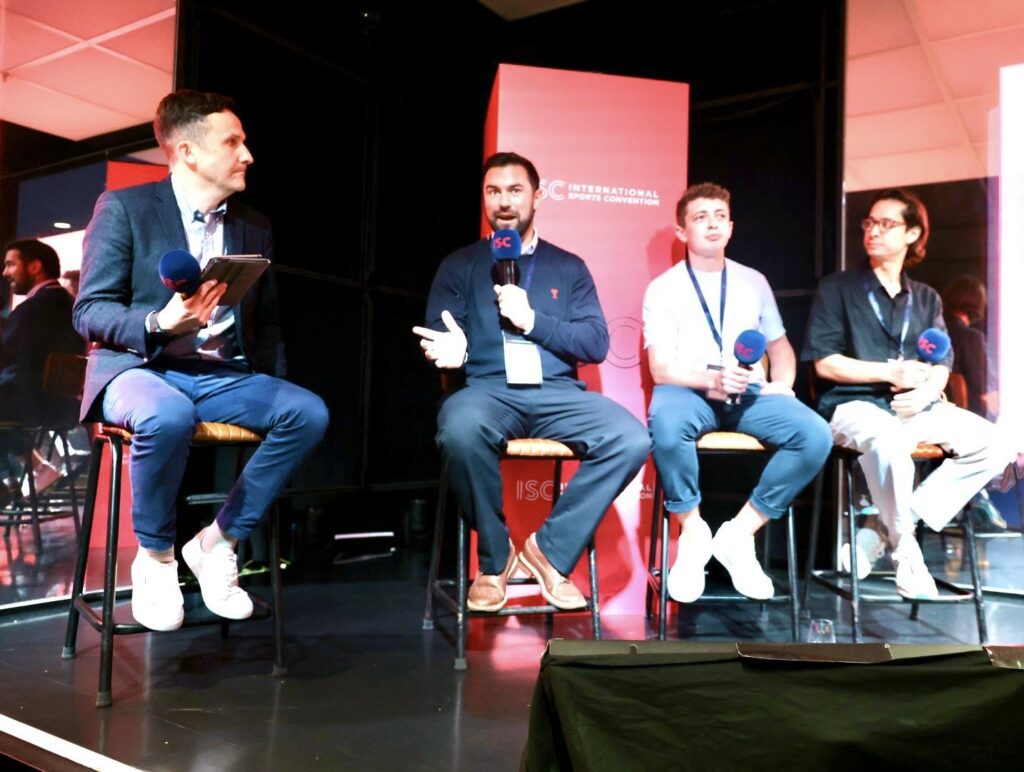Blair Richardson, Director, Business Development – Sportz Interactive
Joey Davidson, Head of Digital Products – Women’s Super League Football
Fred Baker, Associate Partner – IBM Consulting
Artificial intelligence has captured the public imagination, and sparked a lively global debate, as a technology that can think for itself.
But as this ISC Fan Engagement Summit panel explored, its value in sport will come from using it to think differently.
The computing power and multi-platform capabilities of AI tools are making new experiences possible. Blair Richardson, director of business development at specialist technology company Sportz Interactive, explained how AI is powering revolutionary way for blind fans to enjoy NBA games. Repurposing real-time data, the league can translate on-court action to haptic boards so that those fans can feel each game in a unique way.
The ability of AI to drive reframe engagement strategies also intrigued the panel.
As Joey Davidson, Women’s Super League Head of Digital Products, pointed out, the classic football fan strategy was designed through the men’s game. For the WSL, generating insights into what does and does not work in women’s sport is critical.
Automation is helping rights holders create more content and coverage, Davidson added. This is an important use case for the WSL, which has not historically been able to depend on live broadcasts of every game but whose fans have been trained by the market to expect that.
IBM Consulting Associate Partner Fred Baker concurred, noting that automated tools are now unlocking the kind of depth of insight and analysis for a first-round wheelchair tennis match at Wimbledon that was once exclusive to singles’ finals.
But it is also imperative, Baker said, for brands and businesses to act with “great care” in “every step of AI” in pursuit of the right outcome. IBM trains its AI platforms to intimately understand the voice and guidelines of partners like Ferrari, while organisations are also contending with much broader trends.
As Richardson argued, generative AI platforms like the powerful Sora video tool can represent a considerable risk to IP security. That may make owned and operated spaces more appealing to brands than social media. There is still value in experimentation, however, particularly when it comes to giving fans the chance to play with content.
Baker noted that a third of IBM’s product in the market is governance-focused – building trust and eliminating bias are central to its client work. And for fans, trusting what they see is becoming increasingly crucial.
Davidson noted that creators flooding social feeds with low-value AI content have alienated fans – even changing how they perceive non-AI generated content.
“Authenticity is still what we really want to focus on,” he said. This was another point of agreement for the panel: IBM has used AI to recreate personalities like CBS golf anchor Jim Nantz but done so in clear partnership with the people involved.
For Richardson, personalisation at scale is perhaps the most exciting possibility of an AI-guided future. SportzInteractive creates individual presentations of Premier League matches by splicing in-game footage together with shoulder content, behind-the-scenes coverage and fan celebration videos. In cricket’s Indian Premier League, meanwhile, personalisation has driven clear spikes in mobile app usage and engagement.
AI is already changing what is possible in fan engagement. Nevertheless, the panel were also keen to set clear terms around how it should be used.
“Human oversight,” said Richardson, “is absolutely our prerogative.”

